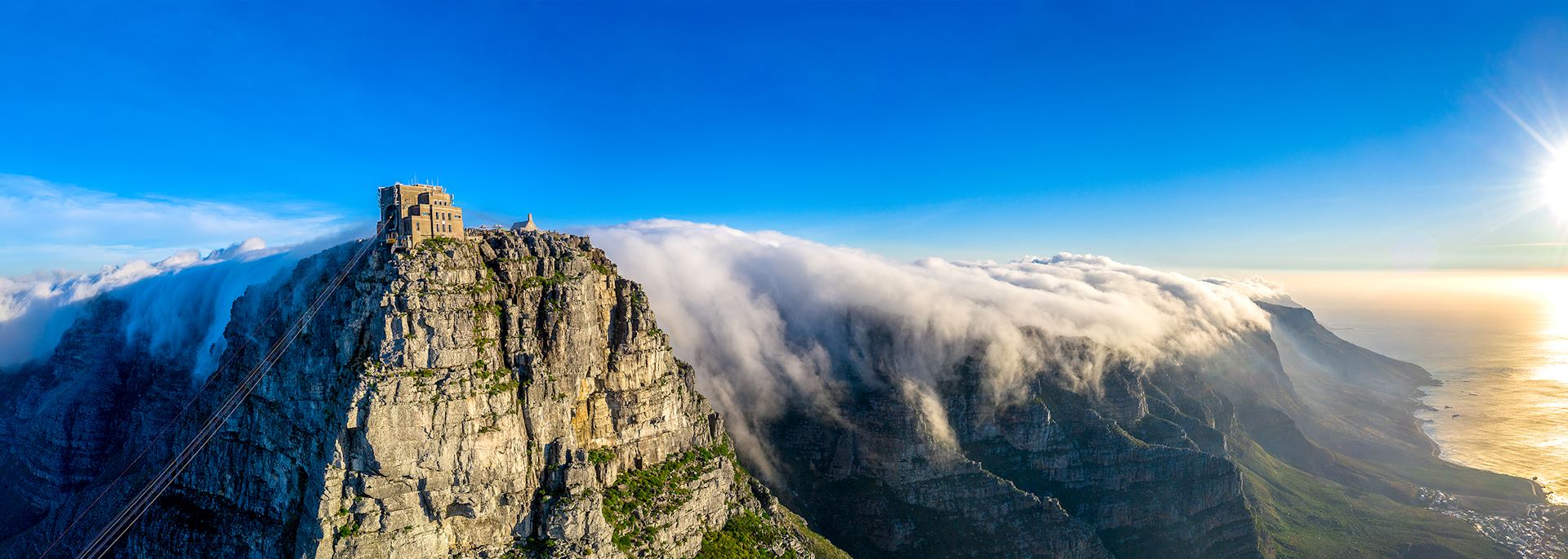When visiting South Africa, it’s easy to spend leisurely days eating and drinking the country’s fine foods and wines, spotting wildlife from the back of a game vehicle, and strolling along beaches to the sound of crashing waves. But there are also lots of things to do with a more active focus.
Our South Africa specialists have been out trying experiences that allow you to explore the country’s mountains, rivers, national parks and coastline by foot, bicycle, kayak or paddleboard. From hiking a lesser-trodden route up Table Mountain to walking safaris tracking rhino, here they share their highlights.
Hike up table mountain with a private guide
By Anna
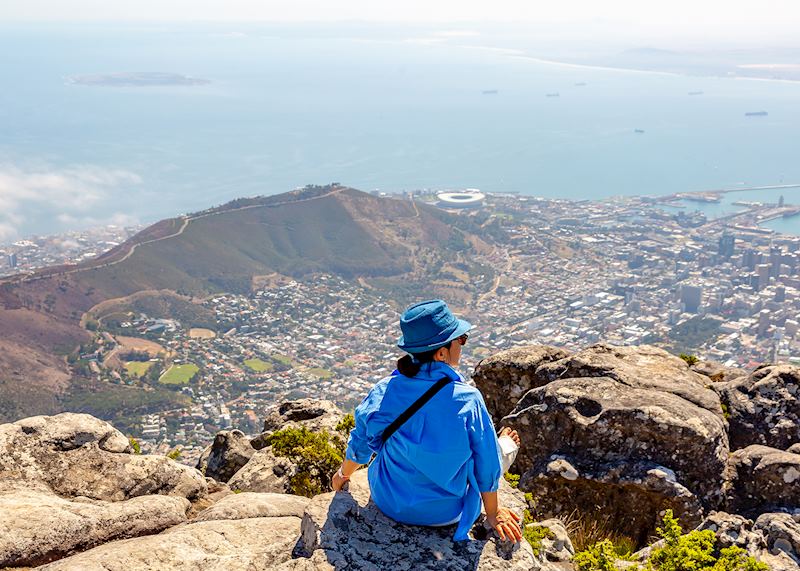
‘Most people hike up that way,’ said my guide, Mike, as he pointed to a string of people beginning their ascent of Table Mountain, ‘but we’re going this way.’ He led me to a deserted track that wound its way up one of the mountain’s steep slopes/foothills.
Mike, a native Capetonian, has climbed the city’s most prominent landmark hundreds of times and knows every route like the back of his hand. Before taking you out to tackle the mountain, he talks you through which route would best suit your fitness level, and plans accordingly. As we climbed, he chatted to me about the indigenous flora and fauna we encountered. There were rock hyraxes (small chipmunk-like rodents that scuttle over the rocks) and proteas — the country’s national flower. He also pointed out key Capetonian points of interest such as Robben Island and talked about what it was like growing up here.
I was so absorbed in conversation that I almost forgot I was climbing over 1,000 m (3,281 ft). That was until we came across a set of steep-sided rocks and Mike asked if I’d like to try ‘scrambling’ (midway between walking and rock-climbing). After he’d reassured me that he’d be able to assist me should I get into difficulty, I got stuck in, using metal bars attached to the rocks to hoist myself up. However, it’s completely up to you whether you want to give scrambling a go or simply continue walking up.
After that exertion, it was time for a picnic. Mike spread out a blanket and we sat overlooking the city, ocean and surrounding mountains as we ate South African snacks including biltong, anchovy fish paste on crackers (surprisingly delicious) and rusks for dipping in rooibos tea.
Energy restored, we made the final leg of our climb. I felt elated as I reached the ‘table top’, around three hours after first setting off. There was time for me to take in the all-encompassing views and fill my camera’s memory card before we caught a fully rotating cable car back down — I felt like I’d earned an easy descent.
Track rhino on foot
By Anna
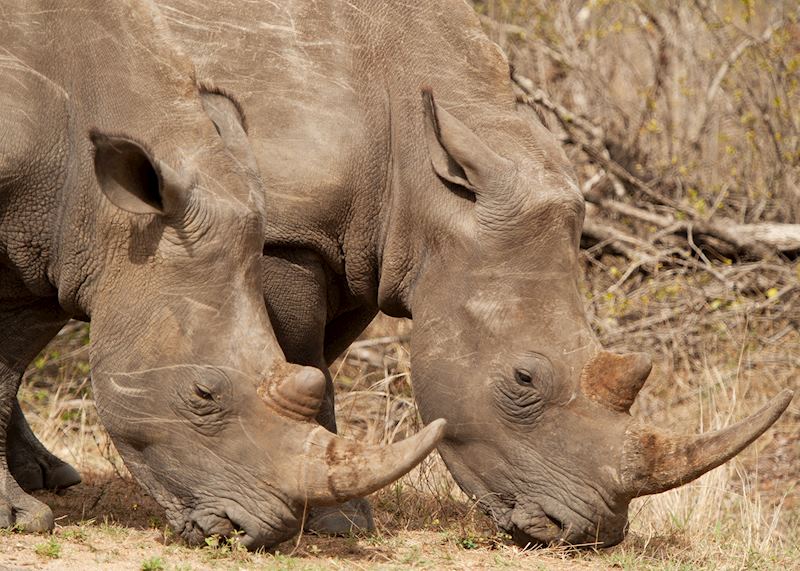
When on safari, I recommend combining game drives with a walking safari or two. With no engine running, your senses become finely attuned to the sounds of the bush, from the call of a bird to the rustle of a tree.
Rhino Walking Safaris Camp in Kruger National Park focuses on walking safaris. Their guides are incredibly knowledgeable about the local ecosystem. A print in the ground, a scent in the air or the snap of a twig can tell them which animals are close. With their guidance, you can get as close to wildlife as is safely possible.
Walks tend to last around three hours, and while they’re not strenuous, you could cover up to 15 km (9 miles).
Even if you don’t come across any headline animals, you’re bound to see and learn a great deal about the finer details of the bush. An unremarkable-seeming hole in the ground might be the den of an aardvark or honey badger. A weed-like plant might be used by locals to relieve ailments. Even dung can hold secrets — my guide was able to identify a pile left by a male white rhino. He explained that a female can sense a potential mating partner just from the smell of his dung midden.
The most exhilarating moment from my own walking safaris was the time when we finally tracked down a white rhino in the flesh. Raising his arm abruptly, my guide indicated for us to be quiet and still, pointing to an adult female just a short distance away. We were frozen in awe and trepidation as we watched her graze.
Cycle between Franschhoek’s wineries
By Anna
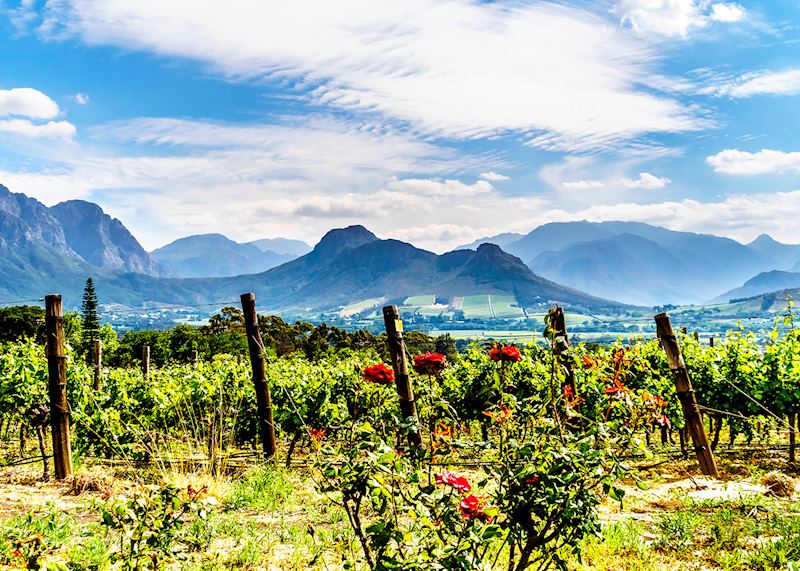
There’s no denying that your primary purpose for visiting South Africa’s Winelands is usually to sample some of the region’s finest produce. But rather than being transported from place to place, you can offset the extra calories consumed with each glass by cycling between vineyards.
It helps that the area offers some of the country’s most striking scenery. Mountains rise like giant fists, their valleys covered in a green patchwork of vineyards. It’s a joy to explore by bicycle, the light breeze cooling you down as you soak up the countryside.
I joined a guided cycle ride from Franschhoek, one of the country’s oldest towns and often referred to as South Africa’s food and wine capital. Lasting around three hours, the tour follows mountain passes and backroads with barely any traffic, stopping at up to three wine estates to sample their vintages. Drinks might be paired with chocolates, cheeses or meat platters from the local area, and a gourmet lunch is included at one of the stops.
At each stop, your guide tells you about the region and its wine-making heritage (wine has been produced here for centuries) and you’ll have the chance to learn about the wine-making process from vine to bottle as you’re led around some of the estates’ vineyards and wine cellars.
While some sections of the cycle ride are uphill, your guide will ensure that the pace suits your group’s fitness levels and there’ll be plenty of opportunities to stop. You might also like to upgrade to an e-bike for some added assistance.
Kayak along the Storms River in Tsitsikamma National Park
By Amelia
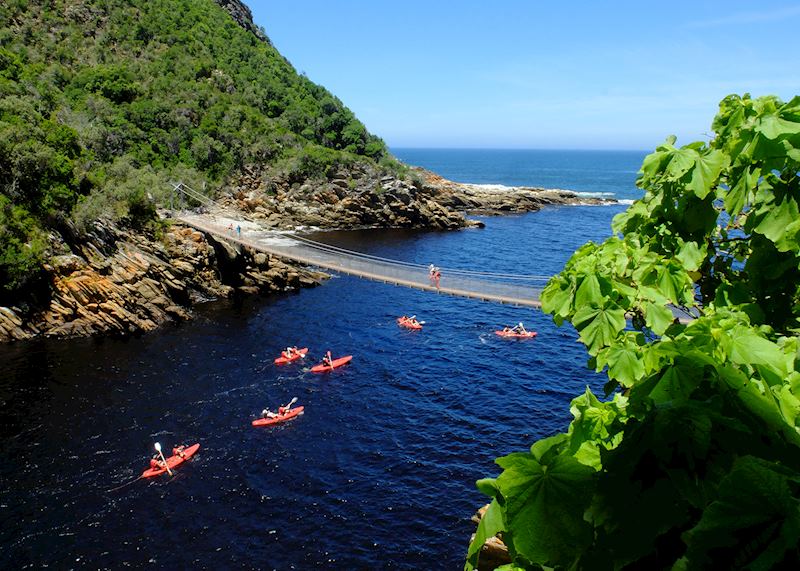
If exploring the Garden Route, I recommend stopping at Tsitsikamma National Park, between Port Elizabeth and Plettenberg Bay. Here, hills are carpeted in dense indigenous forest, waves crash against sheer cliffs, and rivers carve out deep gorges en route to the Indian Ocean. You can explore the Storm River’s waters on a two-hour kayaking trip.
I joined a group of 12 led by two enthusiastic local guides. After a safety briefing and paddling demonstration, we got into our double kayaks and headed out single file, hugging the coastline for around 15 minutes until we arrived at the river mouth. Here you can look up at the 77 m (235 ft) Storms River Suspension Bridge straddling the gorge. Visitors are able to walk across, but seeing the bridge from below gives you a different perspective.
As we continued along the river, the gorge’s foliage-draped cliffs rose up steeply on either side of us, and the channel became narrower. With no other way to access this area, the only sounds were the gurgle of water flowing between boulders, occasional birdsong, and the movement of our paddles as we propelled ourselves against the current. A highlight for me was when our guides pointed out a family of bats sleeping upside-down in-between the rocks.
After around 45 minutes we docked our kayaks and switched to inflatable rafts — better for navigating shallower waters. Boarding them usually involves entering the water which, after the initial shock of cold, feels refreshing. You paddle to two rocks — one 3 m (10 ft) high and the other 5 m (16 ft) high — from which you can jump into deeper water. I plucked up the courage to leap from the lower of the two.
Our final stop was a small but fast-flowing waterfall. You can ride your raft down this miniature cascade for a last rush of adrenaline before returning along the same route to your starting point, this time moving with the current.
Surf, paddleboard, hike & more around the Cape Peninsula
By Andy
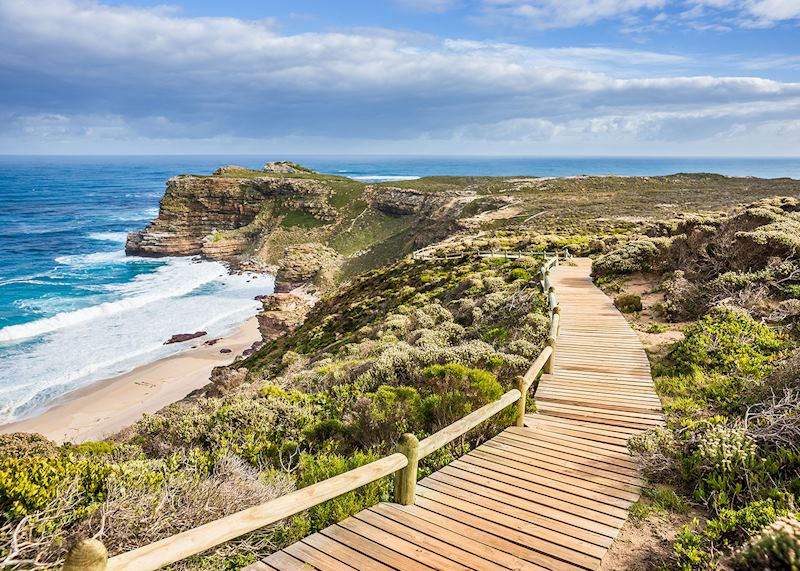
Just a short drive from Cape Town gets you to the wave-lashed Atlantic coast and the rugged Cape Peninsula. While it’s easy to drive yourself around the winding roads that curl around the bays and headlands, I suggest joining a full-day tour with a private guide who’ll drive you, so you can simply take in the ocean views.
Best of all, the entire day can be adapted to whatever you feel like doing or what interests you most, whether you want to visit the African penguins of Boulders Beach, enjoy a secluded locally sourced picnic in a little-known beauty spot, hike among fynbos vegetation, or try all manner of water sports. The guides often specialise in a certain activity or field, so we can match you with whoever’s the best fit where possible.
You might start with a morning surfing lesson or stand-up paddleboard session from one of the peninsula’s wide, white-sand beaches — all equipment is provided for you, and you’ll be given a full briefing and demonstration before entering the water. Alternatively, paddle a kayak around a sheltered bay, looking out for penguins, Cape fur seals, and even whales in the distance.
You’ll stop for lunch (or brunch) at one of the local cafes, most of which have a relaxed atmosphere and serve deliciously fresh food sourced from nearby farms. There are also local delis and farm shops you can call in at if you want to stock up on some more fresh produce.
In the afternoon, you might try a different activity and location, perhaps taking a drive to the Cape of Good Hope — Africa’s most southwesterly point — for a guided hike looking at endemic plants and spotting ostriches, eland, and bontebok wandering across the wild terrain.

